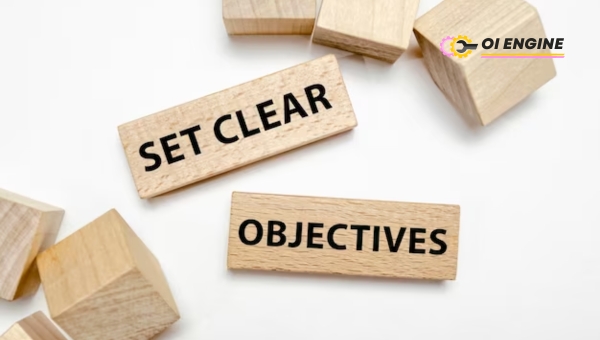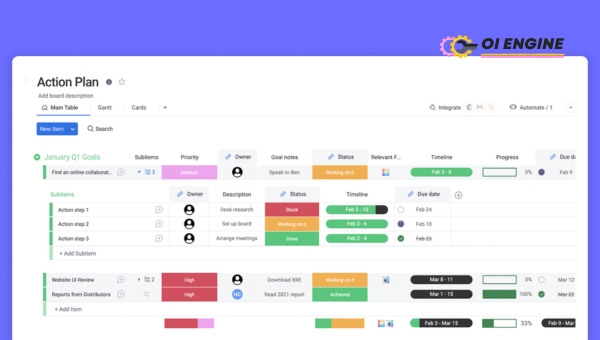Have you ever found yourself stuck in dull, drawn-out meetings? Wouldn’t it feel great to be a part of better meetings? Meetings that are not only efficient but also engage everyone involved? If your answer is yes, I share your sentiments.
Just imagine how delightful it would be if all those tiresome meetings transformed into effective, high-energy ones!
To bring about such a commendable change, planning and strategy is key. Instead of jumping headfirst into a meeting aimlessly – set clear objectives for it.
An organized conference with laid-out purposes not only gives direction to the discussion but also keeps everyone involved on track. It’s like having a roadmap guiding you toward productivity throughout the meeting.
How to Make a Meeting Better?
Meetings are essential in any organization. They help bridge gaps, solve problems, make important decisions, and foster teamwork.

Sometimes meetings can be less productive or even frustrating if not handled properly. Here are some ways to ensure we have better meetings that not only save time but also get things done effectively.
Set Clear Objectives
One of the primary steps towards better meetings is setting clear objectives for your gathering. What do I want to achieve at the end of this meeting? This question should be the foundation of every meeting we organize.

When there’s a clearly defined purpose or goal, it gives direction to the conversation and helps everyone stay on track. Having clear objectives eradicates ambiguity and keeps participants focused on what needs to be discussed or resolved.
Additionally, clear objectives offer a metric through which we can measure the success of our meetings when they end.
Did we accomplish what we set out to do? If not, why didn’t we achieve these objectives? The answer is often a revelation that further fine-tunes our approach to planning more effective and efficient gatherings.
Also Read: Discover The Top 16 Restaurant Bookkeeping Services
Create and Distribute an Agenda in Advance
With our meeting’s objective(s) in mind, creating an agenda becomes a much easier task; one that completes half of our journey toward better meetings!
An agenda offers structure – it outlines what should be discussed during the meeting: which topics will be tackled first? Which subjects require more time for discussion?
Sharing this agenda with all participants before the time gives everyone ample opportunity for preparation – they understand their roles in advance and come prepared with any necessary materials or questions.
Everyone will know exactly what is expected of them during each point on the agenda – this makes sure no one gets caught off guard during discussions while also allowing less room for unproductive surprises.
Invite only Essential Participants
I have learned over time that more people mean more opinions – and possibly more distractions. To improve productivity and focus during a meeting, it is important to invite only the necessary participants.
Not everyone on the team needs to know about every little operational detail; sometimes, fewer voices mean clearer discussions.
Involving too many individuals may complicate decision-making processes while potentially wasting time for those who could otherwise spend that time more productively elsewhere.
So, it’s best practice to always scrutinize our invite list and include only the key individuals with direct relevance to the meeting’s objectives. It helps us organize better meetings that respect each other’s time and resources.
Start and End on Time
One crucial aspect of arranging better meetings is the practice of starting and ending them punctually. If I have noticed anything in my career experiences, it’s that time is exceedingly valuable.
Thus, it’s important to respect others’ schedules by starting the meeting exactly at the slated time. This not only demonstrates your own professionalism but also helps in setting a tone of seriousness about everybody’s respectful use of time.
Moreover, ensuring that a meeting ends on schedule is just as vital as starting it promptly. Participants tend to lose focus if sessions extend beyond scheduled hours; their attention may ebb along with their energy levels and productivity can take a hit.
So try to wrap up everything within the allotted time frame – if an issue remains unresolved by the end time, consider scheduling another meeting to prevent infringing on participants’ anticipated schedules.
Encourage Active Participation
The essence of better meetings lies not just in delivering presentations but also in encouraging lively participation from everyone present.

As an active participant myself, I prefer interactive sessions over monotonous lectures any day! Ask people for their input or get them involved through integrative activities – these techniques foment creativity and enthusiasm among attendees while enhancing collective ownership of ideas.
The members who partake in discussions often bring fresh viewpoints that can significantly contribute to problem-solving or decision-making processes during meetings.
Also encouraging quieter participants can reveal hidden insights they might otherwise hold back due to shyness or apprehension which collectively contribute towards achieving productive outcomes for better meetings!
Also Read: Where Are Self-Driving Cars Legal? AI Takes The Wheel!
Limit The Meeting Duration
Unnecessarily lengthy gatherings are usually less productive – trust me when I say no one wishes to spend their entire day stuck in a meeting room!
Therefore, limit the duration of meetings to fit within a sensible time frame. In my experience, realistically planning by clearly delineating key discussion points ahead of time often means we can address all issues without resorting to marathon meetings.
Moreover, not every discussion has to culminate in an hour-long session. I’ve found that oftentimes, shorter meetings prove more fruitful as they maintain focus and energy levels among participants.
Quick stand-up meetings or brief catch-ups can effectively cater to communication needs while making attendees feel more engaged and less drained for better meetings.
Stay focused on the agenda
An agenda guides the direction of a meeting. It’s important to establish this guide before the meeting begins and see that everyone sticks to it during the meeting (staying focused).

When people understand what is expected from them in a meeting, they show up more prepared and contribute more effectively.
It’s easy for conversations to stray away from the main topic during meetings. That’s where I step in as an organizer — gently nudging discussions back toward the main objective helps maintain focus and productivity.
Staying committed to attaining objectives while fostering open discussions delivers better meetings.
Use technology wisely
We live in an era where technology has smoothened almost every aspect of our lives, including business meetings.
Projectors, video conferencing tools, collaboration software – these technological advancements all make communication easier and more efficient.
It is essential not just to use these tools but to utilize them wisely for better meetings; ensuring good audio/video quality during video conferences or remote calls ensures smooth communication; using collaboration tools lets everyone interact in real-time regardless of their geographical locations.
But remember always – Do not let technology complicate things – if any tool interrupts rather than enhances discussion flow during meetings maybe it’s better to leave it aside!
Assign action items with deadlines
Knowing what needs to be done and by when is crucial to keep things moving forward after meetings.

Laying out clear action items and assigning them with specific deadlines helps everyone understand their tasks and responsibilities.
I like to wrap up our meetings by summarizing main discussions, and key decisions, as well as laying out these action items. I find this approach not only ensures accountability but also clear communication, contributing essentially to better meetings.
However, just assigning tasks doesn’t guarantee they get done. As a meeting organizer, it’s my job to ensure attendees understand their responsibilities fully which includes knowing project details or resources they need to accomplish their tasks within the given deadline.
Also Read: Trucking Statistics: Key Insights And Trends
Follow up on previous action items
Following up on previous action items can drive commitments home and help secure progress – so never skip this step in any of your meetings!
I always start my meetings with a review of the actions assigned from previous sessions. This serves two purposes: one, it allows everyone to update others on their progress; two, it also acts as a subtle reminder for those who might have slipped off track.
It’s important that these follow-ups are constructive rather than confrontational — remember your role is not just tracking but facilitating problem-solving progress too while leading towards better meetings.
Keeping each follow-up focused and brief ensures we are using time efficiently without losing sight of new agenda items that demand attention.
FAQs
How do you run a better meeting?
In my experience, to run better meetings, you must set clear objectives beforehand. Also, create and distribute an agenda in advance so participants know what to expect.
What are the 5 Ps of effective meetings?
The secret to better meetings often lies in remembering the 5 Ps: Purpose, Preparation, Participation, Politeness, and Punctuality. These help ensure that everyone is on the same page and interactions are respectful.
What is meant by effective meetings?
Effective meetings result in clear decisions and action items with deadlines. They start and end on time while encouraging active participation from all attendees.
What are the 4 C’s vs the 4Ps?
While this could have many meanings depending on context – generally speaking, the 4Ps can reflect Product, Price, Place, and Promotion (a marketing mix tool). Meanwhile, the “Four Cs” model refers to Consumer/Customer cost, Convenience/Place, or Channel promotion/Communication.
What is the key to a good meeting?
The key to conducting a good meeting lies in limiting its duration while staying focused on your agenda. It’s important to use technology wisely without letting it distract from your goals.
Also Read: US States With The Most Bridges: Which State Leads The Pack?
Conclusion
Planning and preparation are paramount when it comes to better meetings. The steps discussed herein—setting clear objectives, creating an agenda in advance, inviting only essential participants, starting and ending on time, encouraging active participation, limiting meeting duration, staying focused on the agenda, using technology wisely, and setting action items with deadlines—are crucial in achieving meaningful and productive gatherings.
Additionally, never forget the importance of following up on previous action items from both current and past meetings – this ensures continuity and builds accountability among team members.
Overall, conducting efficient meetings is a skill that can be honed over time to boost your teams’ productivity levels.
